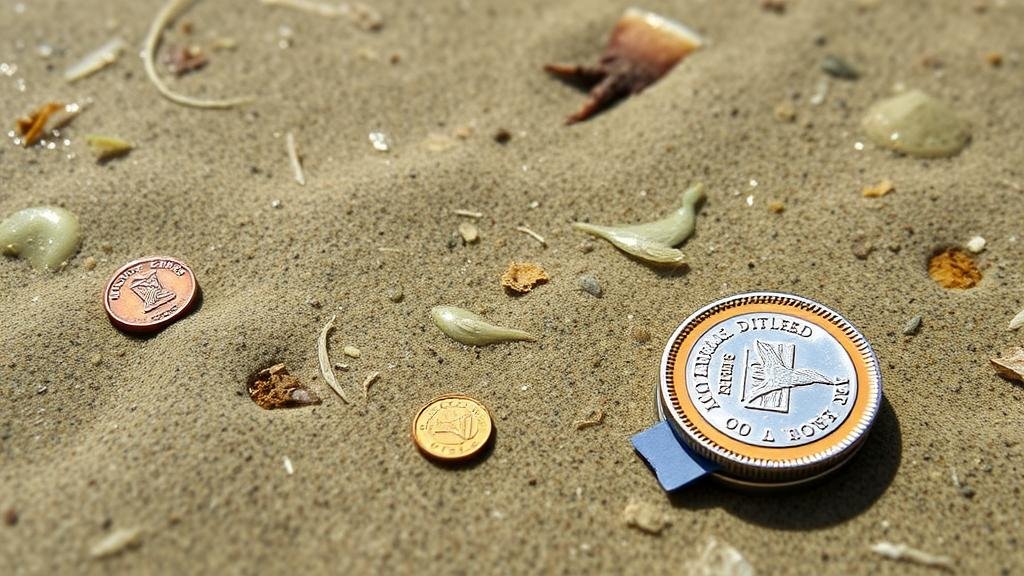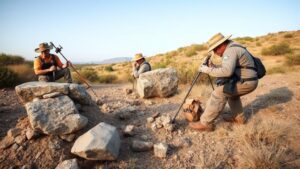How to Detect Sunken Coins in Sandy Seabeds and Shifting Currents
How to Detect Sunken Coins in Sandy Seabeds and Shifting Currents
Detecting sunken coins in sandy seabeds and shifting currents presents both a challenge and an adventure for treasure hunters and researchers alike. The environment plays a crucial role in both the distribution and preservation of these lost valuables. This article explores techniques, tools, and considerations vital for successfully unearthing sunken coins under such conditions.
Understanding the Environment
Before diving into techniques for coin detection, understanding the environment is essential. Sandy seabeds, often found in coastal regions and riverbanks, experience significant shifts due to natural phenomena.
- Water Currents: The movement of water can cause sediment to shift, burying coins deeper or moving them entirely to new locations.
- Wave Action: Strong waves can erode sand and expose buried treasures or further entrench them.
Research conducted by the University of Florida indicates that currents can transport sand and treasure over distances of up to 1,000 meters, making historical data crucial for identifying likely search areas.
Tools and Techniques for Detection
Using the right tools enhances the likelihood of finding sunken coins. Several high-quality devices are specifically designed for underwater exploration.
- Metal Detectors: Waterproof metal detectors are essential. Models such as the Minelab Excalibur and Garrett AT Pro are known for their effectiveness in sandy environments.
- GPR Systems: Ground Penetrating Radar (GPR) can provide a deeper understanding of the sub-surface, identifying where larger accumulations of coins may exist.
In practical application, an experienced diver utilized a metal detector during a search off the coast of California and successfully recovered a collection of coins buried just under the sand, highlighting the detectors sensitivity in shifting environments.
Strategies for Effective Search
A methodical approach can greatly increase the chances of success when searching for sunken coins.
- Choose Optimal Conditions: Searching during low tide can expose more area and minimize the risks from waves and currents.
- Grid Searching: Use a systematic grid search pattern to ensure comprehensive coverage of a given area.
- Establish Baselines: Establish fixed points for orientation to avoid disorientation in shifting sands.
For example, during a search on a Florida beach, divers employed a grid searching technique and established a series of fixed buoys to locate and recover dozens of sunken coins over several weekends.
Considerations and Best Practices
While treasure hunting can be exhilarating, it’s essential to observe legal and ethical considerations.
- Permits: Always check local regulations regarding metal detecting in marine environments to obtain necessary permits.
- Respect Protected Areas: Avoid areas that are archaeological sites or protected habitats to preserve marine ecology.
Also, an ethical approach not only fosters a responsible practice but also helps in the preservation of historical artifacts. For example, in 2018, a group of treasure hunters in Greece discovered ancient coins but reported them to authorities, allowing for proper documentation and study.
Conclusion: Actionable Takeaways
Detecting sunken coins in sandy seabeds is not only about having the right equipment but also understanding the environmental nuances that affect treasure visibility and accessibility. Here are key takeaways for aspiring treasure hunters:
- Invest in quality waterproof metal detectors and GPR systems before launching searches.
- Use systematic and strategic search patterns to enhance efficiency.
- Maintain ethical practices and comply with local regulations to ensure responsible treasure hunting.
With the right tools, techniques, and ethical considerations, the quest for forgotten coins in the shifting sands of seabeds can turn into an exhilarating and rewarding adventure.



